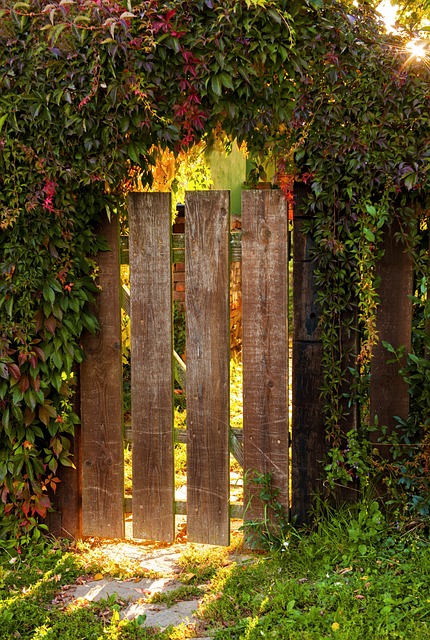In New Bedford, a well-maintained fence is not just an exterior accent but a functional investment. However, understanding the common issues plaguing fences in this coastal city is crucial before undertaking repair or installation projects. This article guides homeowners through the intricacies of choosing durable fence materials suited to New Bedford’s climate and environment. We outline practical steps for installation, expert tips for efficient repairs, and navigate local regulations to ensure your fence project complies with city codes.
- Understanding Common Fence Issues in New Bedford
- Choosing the Right Fence Material for Your Property
- Steps for Effective Fence Installation Process
- Expert Tips for Efficient Fence Repair Techniques
- Local Regulations and Permits for Fence Construction
Understanding Common Fence Issues in New Bedford
Fences in New Bedford, like anywhere else, face a range of issues over time due to various environmental factors and general wear and tear. One common problem is rot, particularly in wood fences, caused by prolonged exposure to moisture. This not only weakens the structural integrity of the fence but also makes it an eyesore. Another frequent issue is damage from local wildlife, including deer and small animals, which can leave significant marks on even the sturdiest of fences.
Weathering, particularly harsh winters and heavy rainfall, plays a significant role in fence deterioration. High winds can also cause damage, especially to older or improperly installed fences. Additionally, vehicles accidentally hitting fences, either through neglect or poor visibility, contribute to fence repairs. Understanding these common problems is essential for homeowners and property managers in New Bedford to ensure timely maintenance and replacement when necessary.
Choosing the Right Fence Material for Your Property
When considering fence repair or installation, selecting the appropriate material is a pivotal decision that influences both the aesthetics and longevity of your property’s barrier. Different materials offer unique advantages, catering to various preferences and budgets. Wood, for instance, exudes natural beauty and warmth but demands regular maintenance to resist rot and pests. On the other hand, vinyl fencing is low-maintenance, durable, and versatile in terms of color and style, making it a popular choice among homeowners. Metal fences, known for their strength and security, can add a touch of modern elegance but may be more expensive and require specific considerations for installation.
Understanding your climate, the level of privacy desired, and aesthetic preferences is essential when choosing fence materials. For instance, in coastal areas prone to high winds and salt air, a durable, weather-resistant material like treated wood or vinyl might be ideal. If privacy is a priority, solid fences or those with intricate designs that block line of sight can effectively serve this purpose. Alternatively, open latticework fences offer a balance between visual appeal and airflow, making them suitable for both aesthetic and functional needs.
Steps for Effective Fence Installation Process
When installing a new fence, proper planning and execution are key to ensuring longevity and aesthetic appeal. The process begins with measuring and marking the perimeter of your desired fence line, considering local regulations and property lines. It’s crucial to choose the right materials that match both your budget and desired style, be it wood, vinyl, or metal.
Next, prepare the ground by removing any obstructions and leveling the surface. Digging post holes at the marked locations is a critical step for a sturdy fence. Place the posts in the holes and ensure they’re plumb before backfilling with concrete to secure them firmly in place. Once the posts are set, attach the fence panels or rails according to manufacturer instructions, completing the framework of your new fence.
Expert Tips for Efficient Fence Repair Techniques
When repairing or installing a fence, proper techniques and tools are essential to ensure longevity and durability. Start by assessing the extent of damage; inspect for loose posts, rotten boards, or missing sections. Addressing issues early prevents further deterioration.
Use high-quality materials suitable for your climate; treated wood or vinyl options are weather-resistant. For repairs, replace damaged parts with identical pieces. Secure them tightly using appropriate fasteners, and consider adding concrete anchors for stability, especially in windy areas. Regular maintenance, such as cleaning and sealing, also contributes to a fence’s longevity.
Local Regulations and Permits for Fence Construction
When planning fence repair or installation in New Bedford, it’s crucial to familiarize yourself with local regulations and permits. The city of New Bedford has specific guidelines regarding property alterations, including fence construction. These rules are designed to maintain the aesthetic and functional integrity of neighborhoods while ensuring safety and property values.
Before breaking ground, homeowners should check with the local building department to understand the required permits and specifications for fence installation. Permits may be needed for various types of fences, depending on their height, materials, and location. Adhering to these regulations not only avoids legal issues but also guarantees your fence meets safety standards and blends seamlessly with the surrounding environment.
